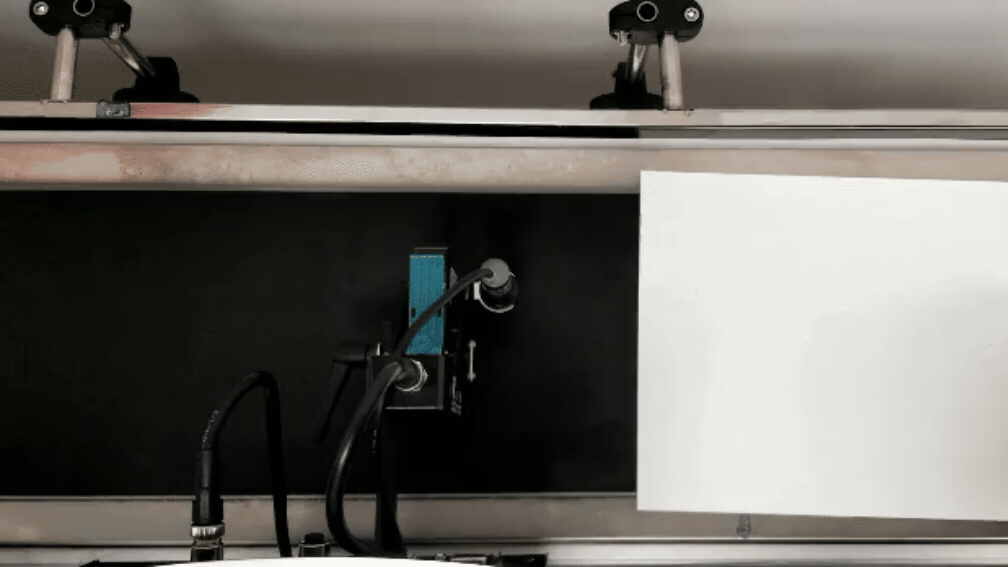Step 2 – Go to the settings option on the controller to access the speed and delay settings.
Step 3 – Click on the “?” icon to open the Average Speed Measure feature. Using this feature, you can measure the approximate print speed based on your production line speed.
Step 4 – Enter your product length in either millimeters (MM) or inches. Here, we are using millimeters, and our paper length is 280MM. After entering the length, click on the start button.
Step 5 – You will now see a 30-second countdown. Place one of your products on the production line and pass it through the photocell to detect the speed. Refer to the GIF below for guidance.
Step 6 – The software will now display the average speed based on your production line. In this example, it is 89.49 mm/s for the conveyor belt speed. Copy this data into the speed input field.
Next, you will begin receiving prints on your product. The next step is to ensure the print is in the correct location. You will need to adjust the delay settings accordingly.
During initial testing, after determining the print fire speed for your product based on your conveyor belt speed, you need to estimate the approximate delay for your product. For products longer than 10 centimeters (CM), you can start with a delay of around 50-100 mm. After obtaining the print, if you want to print at the starting point of the product, decrease the delay. Conversely, if you prefer to print further inside the product after it’s detected by the photocell, increase the delay.
Based on our product and conveyer speed, delay 140mm print at the start of the product and increasing delay will print further inside of the product. So you can measure your delay settings to get the exact right location of the print.










Comments are closed